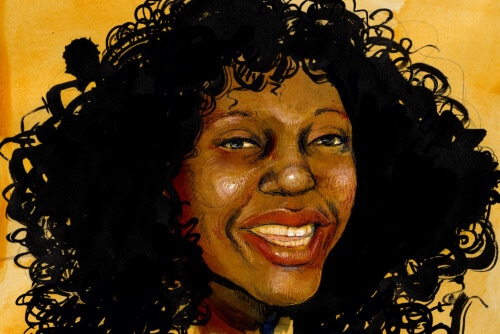This article offers a discussion of domestic debates in the Philippines, mapping out how civil society and state actors construct the issue of women’s employment as domestics in different, yet sometimes overlapping ways. Indeed, civil society actors, including feminist and women-centered NGOs, during the height of the debates produced representations of migrant women that drew on patriarchal logics in their bid to effect reforms to Philippine migration policy. Their constructions of migrant women resonate in important ways with those produced by Philippine migration officials themselves. As a consequence, civil society actors find themselves unwittingly colluding with the state in enacting laws that only serve to discipline women and to conform to dominant notions of gender and sexuality.1 Without denying the very real conditions of exploitation and violence Filipina women face while working in low-wage, low-status jobs as foreigners overseas, this paper aims to critically evaluate different migrant advocates attempts at struggling against those conditions. As Na Young argues in her study of an anti-trafficking campaign on behalf of Filipina prostitutes in South Korea:
If we continue to position women as vulnerable victims to be protected, women’s symbolic position within a patriarchal capitalist society cannot be challenged. The images of helpless exploited prostitutes may reproduce pre-existing gender ideologies to fulfill masculinist national interests, where a woman serves as the symbolic boundary marker of nation and gender. Therefore, we must keep in mind that the feminist task should be to produce critical, radical, and thus subversive theories other than those of oppression—not only to see a more comprehensive picture of transnational prostitution, but also to decolonize the allegories of woman.2
Lee’s argument is relevant to the this study, as public sentiment around women employed as foreign domestic workers often elicits responses similar to those elicited by sex work.
It is my hope that the research presented here can open up new lines of sociological inquiry on gender and migration. Specifically, there continues to be a paucity of scholarship examining the gendered consequences of migration for the societies that women leave behind. This paper attempts to address this lacuna through an examination of contestations over women’s migration in the Philippine context.3
The research discussed here draws from a range of methods including interview and archival research, as well as secondary research to analyze what I am calling the domestic debates. I conduct a discursive analysis of empirical studies done by the Social Weather Stations, a non-profit survey research center, and survey and interview research conducted by migrant worker NGOs. While on their own these studies offer important empirical and analytical insights on women’s migration from the Philippines, I examine this scholarship, alternatively, to track the ways in which they discursively constructed women’s migration.
The SWS was, and continues to be, important in shaping public discourse about specific state policies, and Philippine politics generally, through its sponsorship of major national opinion surveys. Between the years of 1991, when Maricris Sioson was murdered, and 1995, the year Flor Contemplacion was hanged, the SWS conducted several surveys on the issue of international migration more broadly, and women’s migration specifically, and published eight reports detailing their results. Though the first set of surveys during the early part of the period that demarcate the domestic debates, were focused mainly on the economic aspects of international migration, that is, whether workers sought work abroad, or whether migrants engaged in self-employment or entrepreneurial activities when they returned, the SWS surveys later became more focused on the public’s perceptions of women and international migration. Moreover, the surveys concerned themselves with assessing whether the state was regulating women’s migration well enough.4
During the same period, a range of migrant workers’ NGOs, including church-based and self-described feminist NGOs, conducted and published social scientific research to advocate for migration reforms. While there are dozens of migrant worker NGOs in the Philippines, I focused on three NGOs that exhibited closer ties to state officials, and were therefore arguably more influential in shaping state policy. The Women in Development (WID) Foundation’s research for instance, was actually in their words a, “GO-NGO (Government Organization-Non-Government Organization) collaborative project,” with the purpose of enabling WID to help the government craft “gender-sensitive” programs.5 The Philippine Overseas Employment Administration allowed WID access to over three thousand domestic workers over the course of six months to conduct its research.6 SENTRO (Sentro ng Manggagawang Pilipina or Women Workers’ Center), was amongst the conveners of two networks of migrant-serving NGOs including the Women Overseas Workers NGO Network (WOW-NET) and the Philippine Migrants’ Rights Watch (PMRW). SENTRO conducted its own research as a means of advocating for women migrants and involved key migration officials in the publication of their research. SENTRO claimed, “This book is part of our advocacy … aimed at influencing public response and policy for the sector”.7 Alongside social scientific research, NGOs like the Kanlungan Center, participated in policy discussions with migration officials, with transcripts later published.8
To understand the state’s roles in shaping the domestic debates, I draw on archival research of governmental documents, both internal and public, from 1991 to 1995, to which I gained access during the course of fourteen months of field research in the Philippines from 2000-2001. During my time in the field, I conducted interviews with several dozen migration officials of different ranks throughout the migration bureaucracy. My aim was to understand how bureaucrats interpret and implement different migration policies and laws. I use some of my interview research here.
- What Sonia Alvarez identifies in the Latin American context may have some relevance for the Philippines. Alvarez finds that neoliberal economic restructuring in Latin America can, “potentially undermine” NGOs’ “ability to advocate effectively for feminist-inspired public policies and social change.” Sonia E. Alvarez, “Advocating Feminism: The Latin American Feminist NGO ‘Boom’.” International Feminist Journal of Politics 1, 1999, 181209. Instead, states turn to NGO workers as gender experts, rather than citizen advocates. Moreover, they treat NGOs as surrogates for civil society, rather than attempting to fully incorporate broader segments of civil society actors. Finally, the state devolves some of its activities to NGOs, which are subcontracted to implement women’s programs. [↩]
- Na Young Lee, “Gendered Nationalism and Otherization: Transnational Prostitutes in South Korea.” Inter-Asia Cultural Studies 7, 2006, 456471. See also, Helen Schwenken, “”…they decided to follow a completely different track—the one of trafficking”. The challenges of framing women migrants’ rights in the European Union.” La Revue Européenne des Migrations Internationales. REMI, Sharma, Nandita, 2005; and “Anti-Trafficking Rhetoric and the Making of a Global Apartheid.” NWSA Journal 17, 88-111. [↩]
- Amongst the few studies that do examine the consequences of women’s migration in “home” countries is Petra Dannecker’s work on Bangladeshi women’s migration. Dannecker has found that the increasing out-migration from Bangladesh can “mean a challenge to the existing gender order” and that it can “initiate transformation of gender relations in this Islamic country” (Dannecker 2005, 657). Dannecker documents how an organization of male Bangladeshi migrants and an Islamic organization called for the banning of women’s migration because they believed that women’s honor could only be protected if they were prevented from leaving their families and the homeland. While the government instituted policies to regulate and hinder women’s migration since the 1980s in order to respond to issues raised by these groups, protests from other civil society actors and recruitment agencies ultimately led to the repeal of a recent government ban. Contestations over the restriction of women’s migration reveals to what extent the Bangladeshi gender order has been destabilized. See also, Nana Oishi, Women in Motion: Globalization, State Policies and Labor Migration in Asia. Stanford: Stanford University Press, 2005. [↩]
- Ma. Alcestis Abrera-Mangahas, “Public Attitudes Towards Female Overseas Workers: Implications for Philippine Migration Policy.” Social Weather Stations, Quezon City, Philippines, 1994; Ma. Alcestis Abrera-Mangahas, “Violence Against Women Migrant Workers: The Philippine Experience,” in Filipino Workers on the Move: Trends, Dilemmas and Policy Options, Ed., B. Carino. Quezon City, Manila: Philippine Migration Research Network, Philippine Social Science Council, 1998; Lopez, Ma. Glenda S Lopez. 1995. “SWS 1994 Surveys on OCWs: Danger and Deployment Bans.” Social Weather Stations, Quezon City, Philippines, 1995; Mahar Mangahas, “Perceptions of Risks Faced by Female Overseas Contract Workers,” Social Weather Stations, Quezon City, Philippines 1995; Social Weather Stations, “Filipino Workers’ Aspirations for Overseas Employment,” Social Weather Stations, Quezon City, Philippines, 1991. [↩]
- Ruby Palma Beltran and Aurora Javat De Dios, “Filipino Women Overseas Contract Workers … At What Cost?” Quezon City, Philippines: JMC Press, Inc., 1992. [↩]
- Ibid. [↩]
- Ruby Palma Beltran and Gloria F. Rodriguez, “Filipino Women Migrant Workers: At the Crossroads and Beyond Beijing.” [↩]
- Solidarity, “Filipinos Overseas: Is it Worth All Those Dollars?” Solidarity 27, 1994. [↩]




